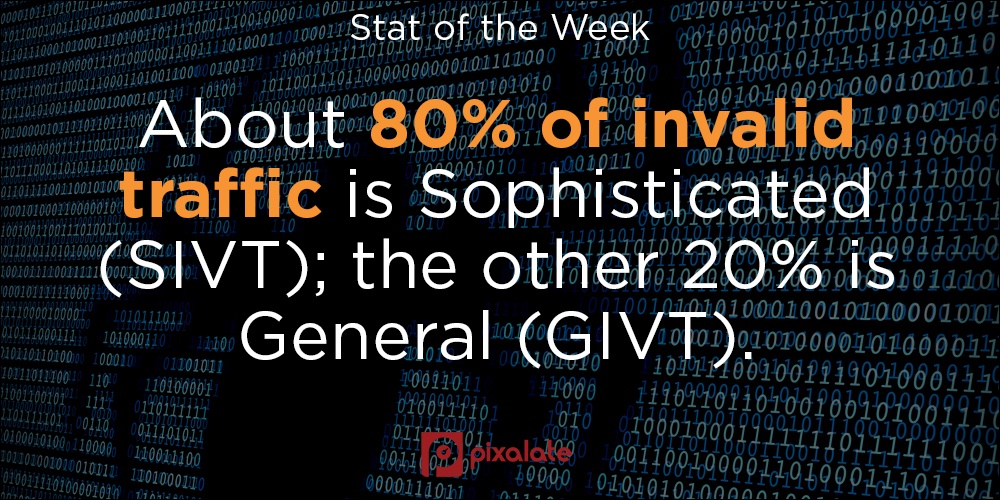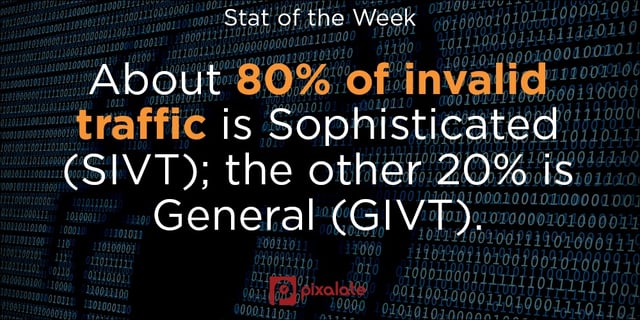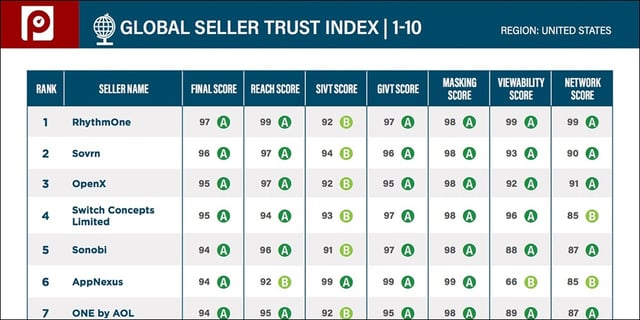
This week's review of ad fraud and quality in the digital advertising space.


Pixalate this week released its May 2017 Seller Trust Indexes, which rank the overall quality of programmatic sellers across desktop, mobile and video impressions. In the Mobile Seller Trust Index (MSTI), AdColony captured the top spot. In the Video Seller Trust Index (VSTI), Centro rose two spots to claim the No. 1 position in the U.S.

Digiday explores the complicated world of video ad fraud. In particular, the article zeroes in on a specific type of video ad fraud: Middlemen buying display ads and repurposing those display ads as "video" inventory — which cost more. These fraudsters "are making money by arbitraging the difference between display and video CPMs," per Digiday.

According to the Wall Street Journal, "some publishers say they’re now taking a 'less is more' approach when it comes to placing ads across their sites [by] stripping out irritating ad formats and limiting the number of ads." They say it results in more engaged customers and increased revenue, per the WSJ. Some publishers are sticking with low-quality ads — such as recommendation ads or autoplay videos — given the short-term benefits, but the article warns of the potential long-term damage of low-quality ads.

MediaPost examines whether or not blockchain is the answer to some of programmatic's challenges. "Programmatic marketing appears well established, but fraud, measurement, and transparency issues continue to plague the digital marketplaces, with remedies not yet able to fully counteract the maladies," wrote MediaPost. "Blockchain technology is where ad tech may turn next to address many of these pesky problems." However, some observers have noted that ad fraud will remain even with widespread blockchain adoption.

According to new estimates from eMarketer, programmatic TV spend will grow over 75% in 2017. "Next year, programmatic TV advertising will grow another 85.2% to $2.09 billion, and that figure will reach nearly $4 billion by 2019," wrote eMarketer. With Connected TV/OTT ad spend set to explode, marketers would be wise to understand the potential pitfalls.
Sign up for our blog to stay updated with new stats, trends, and analysis on digital ad fraud.
*By entering your email address and clicking Subscribe, you are agreeing to our Terms of Use and Privacy Policy.
These Stories on Weekly Recaps
*By entering your email address and clicking Subscribe, you are agreeing to our Terms of Use and Privacy Policy.
Disclaimer: The content of this page reflects Pixalate’s opinions with respect to the factors that Pixalate believes can be useful to the digital media industry. Any proprietary data shared is grounded in Pixalate’s proprietary technology and analytics, which Pixalate is continuously evaluating and updating. Any references to outside sources should not be construed as endorsements. Pixalate’s opinions are just that - opinion, not facts or guarantees.
Per the MRC, “'Fraud' is not intended to represent fraud as defined in various laws, statutes and ordinances or as conventionally used in U.S. Court or other legal proceedings, but rather a custom definition strictly for advertising measurement purposes. Also per the MRC, “‘Invalid Traffic’ is defined generally as traffic that does not meet certain ad serving quality or completeness criteria, or otherwise does not represent legitimate ad traffic that should be included in measurement counts. Among the reasons why ad traffic may be deemed invalid is it is a result of non-human traffic (spiders, bots, etc.), or activity designed to produce fraudulent traffic.”

